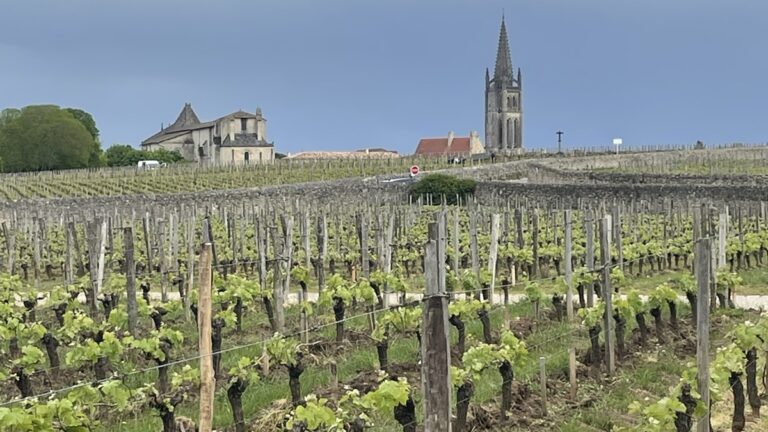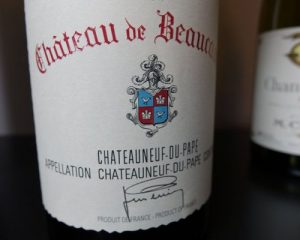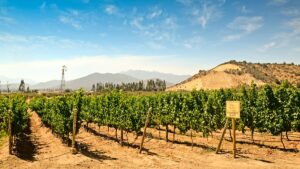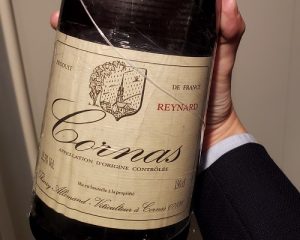
This 2024 vintage is a perfect reflection of the work carried out by the various winegrowers and completely meets the expectations of today’s consumers seeking accessible wines. Indeed, some wines from this vintage are fit for ageing or drinking in their youth. It’s a vintage that will make the Bordeaux bashers think again! So which En Primeur wines should you try as soon as they are released?
A cold, rainy year, leading to freshness in the wines
The difficult weather conditions of this 2024 vintage offered Bordeaux a chance to reinvent itself in the face of the various French and international wine regions. The torrential rain during the year meant that not all the grapes reached full ripeness. On the estates, a drastic selection was made at harvest and yields were down. However, the grapes that made it into the wines were perfect, showing pronounced vivacity and freshness. The era of “too much wood”, influenced by the tastes of the famous Robert Parker, is drawing to an end, and a new era is dawning, with well-structured wines that are harmonious and have more finesse. Many winegrowers are going against the grain by creating wines that shift away from the Bordeaux standard.
New fans who don’t want to wait
New-generation wine tasters no longer bother keeping bottles for a decade, for want of time or space. In fact, among young people, most bottles are opened within 24 hours of purchase. This vintage is therefore a godsend for the Bordeaux winegrowing region, helping it to revive its image with a new public keen on smooth, silky wines.
Finesse and harmony are bringing Bordeaux a new image
As well as producing delicate wines, this vintage has lower alcohol levels, with an average of around 13%. The youngest wine drinkers will love the charming, fruity juices of these wines, some of which can be drunk as an aperitif!
During the En Primeur tasting week, our team was surprised to find wines suitable for drinking young. Here are those which stood out:
- Château Durfort-Vivens, Margaux
Classified as a second grand cru classé in 1855, this estate stands out as one of the pioneers of biodynamic viticulture in the Médoc. It is the standard-bearer for the Bordeaux revival. The 2024 vintage is harmonious, with red fruit aromas and great minerality on the palate. For a number of years now, the estate has been ageing part of its wines in amphorae to give them greater depth. And what a success this has been!
Press scores: Vinous 92-94, James Suckling 94-95, Figaro vin 95-97
- Château Branaire-Ducru, Saint-Julien
This fourth grand cru classé of the 1855 classification is one of the leading estates in the Saint-Julien appellation. Plot-based winemaking using gravity-fed processes enables the estate to offer a supple, delicate wine. Our tasting revealed a fine balance between liveliness and tannic structure. This vintage is a perfect introduction to the savoir-faire of Château Branaire-Ducru.
Press scores: Vinous 92-94, James Suckling 93-94, Figaro vin 92-93
- Château Larcis Ducasse, Saint-Emilion
Larcis Ducasse 2024 is one of the great successes from the Saint-Emilion appellation and a real favourite for us all at iDealwine. It’s the perfect definition of an accessible wine in its youth, boasting a delicate, elegant ensemble. The palate is lively and moreish, with flavours of cherry, blackberry and redcurrant.
Press scores: Vinous 94-97, James Suckling 96-97, Figaro vin 93-95
- Château Clinet, Pomerol
This is another successful wine from 2024. This estate is now one of Pomerol’s emblems and has shown it again here with a precise, delicate nectar expressing notes of strawberry, rose and redcurrant.
Press scores: James Suckling 95-96, Figaro vin 91-94, Vinous 91-93
- Château Poujeaux, Moulis-en-Médoc
Poujeaux is truly an outsider when it comes to the Medoc. This Cru Bourgeois estate, with its 70 hectares of vines, consistently produces round, charming wines. After 12 months in small oak barrels, the wine reveals aromas of red fruit and flowers. On the palate, the wine is supple and smooth from the outset, with heaps of finesse. This is a pleasure wine to share with friends.
Press scores: James Suckling 91-92
- Château Haut-Bergey, Pessac-Léognan
We recently visited this avant-garde Pessac-Léognan estate and were won over by the finesse and drinkability of the wines in question. Paul Garcin has opted for cutting-edge biodynamic methods and is experimenting with amphorae and concrete egg-shaped vats for fermentation. This fruity, pure and delicate wine is in keeping with the style of the estate and a unanimous hit with our team.
- Château Laroque, Saint-Emilion
With 60 hectares, Laroque is one of the largest estates in the Saint-Emilion appellation. The vines are around forty years old and thrive on clay and limestone soil. For this vintage, Merlot accounts for 98% of the blend, producing aromas of dark fruit and chocolate. The palate is deliciously smooth and dense.
Press scores: James Suckling 93-94, Figaro vin 92-95, Revue de Vin de France 91-93
- Esprit de Chevalier White, Pessac-Léognan
Domaine de Chevalier’s white second wine comes from seven hectares of vines dedicated to white winemaking. The stony soil, made up of clay and gravel, produces a wine of great delicacy, combining balance and length. Ten months’ ageing in oak barrels gives it a rounded finish.
Press scores: James Suckling 93-94, Vinous 90-92
- Château de Fieuzal White, Pessac-Léognan
Château de Fieuzal stands out as one of the gems of the Pessac-Léognan appellation. The white wine is often recognised as one of the best in the appellation. The nose is complex, with notes of citrus fruit, lychee, honey and beeswax, while the palate is mouth-watering and full of freshness, with a touch of salinity in the finish.
Press scores: James Suckling 92-93, Vinous 92-94, Revue de Vin de France 92-94
To sum up, the 2024 vintage is full of surprises, with many wines that will be ready to drink as soon as they are released in a year and a half’s time, yet still with decent ageing potential. It’s a reset for the region, like a new lease of life.



